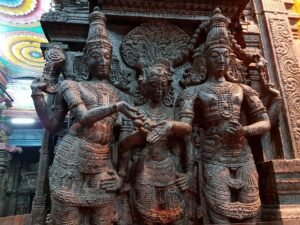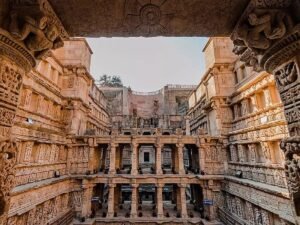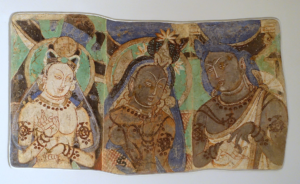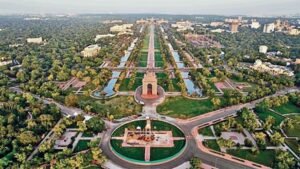Aurangzeb, one of the most controversial figures in Indian history, was the sixth emperor of the Mughal Empire, ruling from 1658 to 1707. His reign, spanning nearly five decades, was marked by relentless expansion, religious orthodoxy, brutal suppression of dissent, and conflicts with Hindu and Sikh forces. A shrewd administrator and a formidable warrior, Aurangzeb cemented Mughal authority through an iron grip but at the cost of deepening religious divides and fostering resentment that would later contribute to the empire’s decline. His policies and decisions shaped the course of Indian history and played a crucial role in the eventual downfall of the Mughal dynasty.
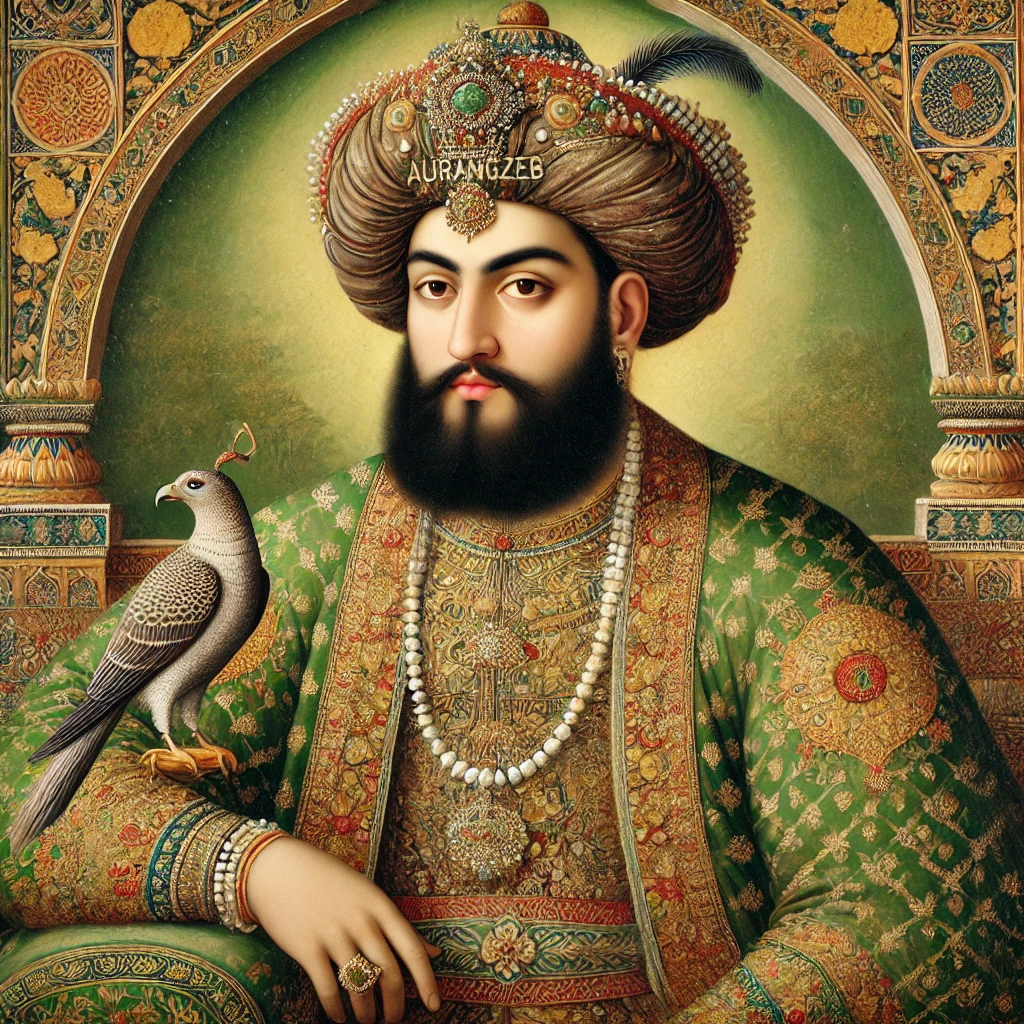
Aurangzeb‘s Early Life
Born in 1618 as Muhi-ud-Din Muhammad Aurangzeb, he was the third son of Emperor Shah Jahan and Empress Mumtaz Mahal. Unlike his more pleasure-seeking brothers, Aurangzeb displayed a keen intellect and a strong inclination toward Islamic teachings from an early age. He received rigorous military and administrative training, proving his capability in battlefields and governance as a young prince. His early military victories, such as his campaigns in the Deccan, earned him recognition within the Mughal court. His austere lifestyle and rigid discipline contrasted sharply with the extravagant ways of his father and elder brother, Dara Shikoh, setting the stage for a major ideological conflict within the family.
The Path to the Throne: Conflict with His Family
Aurangzeb’s ascension to the throne was marked by betrayal, bloodshed, and a ruthless power struggle. After Shah Jahan fell ill in 1657, a brutal war of succession erupted between Aurangzeb and his three brothers—Dara Shikoh, Shuja, and Murad. Aurangzeb, the most ambitious and cunning among them, systematically eliminated his rivals. He executed Dara Shikoh in 1659, imprisoned Shah Jahan in the Agra Fort until his death, and outmaneuvered the remaining brothers to secure the throne.
His calculated brutality and willingness to suppress even his own kin showcased his unyielding determination to rule unchallenged. His victory was not just political but ideological, as he sought to transform the Mughal court into a bastion of Islamic orthodoxy, in stark contrast to the more syncretic policies of his predecessors.
Religious Policies and Islamic Radicalization
Unlike his predecessors, Aurangzeb abandoned Mughal traditions of religious pluralism and tolerance. He reinstated the jizya tax on non-Muslims, destroyed Hindu temples, and imposed Sharia law across his empire. His rule saw an aggressive push for Islamic orthodoxy, including restrictions on music, arts, and non-Islamic cultural expressions. His puritanical policies alienated large sections of his Hindu and Sikh subjects, fueling resentment and revolts. Court musicians, poets, and artists found themselves without patronage, leading to a decline in Mughal cultural achievements. The once-cosmopolitan court of the Mughals became an austere and religiously rigid institution under Aurangzeb’s rule.
Destruction of Non-Muslim Structures and Persecution
Aurangzeb’s religious zealotry led to the demolition of several Hindu temples, including the Kashi Vishwanath temple in Varanasi and the Krishna Janmabhoomi temple in Mathura, replacing them with mosques. He also persecuted Sikh Gurus, executing Guru Tegh Bahadur in 1675 for resisting forced conversions. His brutal treatment of non-Muslims, including mass killings and destruction of places of worship, intensified resistance against Mughal rule. The execution of Guru Tegh Bahadur was particularly significant, as it spurred the militarization of the Sikh community, leading to the formation of the Khalsa under Guru Gobind Singh and setting the stage for future Sikh resistance against Mughal oppression.
Conflict with the Maratha Empire and Sikh Resistance
Aurangzeb faced formidable challenges from rising regional powers, particularly the Marathas and Sikhs. The Maratha leader Shivaji spearheaded a guerrilla warfare campaign that drained Mughal resources. Despite capturing Shivaji’s son, Sambhaji, and executing him, Aurangzeb failed to crush the Maratha rebellion entirely.
The Marathas used their deep knowledge of the terrain and superior hit-and-run tactics to resist Mughal advances. Similarly, Sikh warriors under Guru Gobind Singh fiercely resisted Mughal persecution, laying the foundation for future Sikh militarization. The Sikh resistance eventually led to the emergence of the Sikh Empire, which would later become a dominant force in northern India.
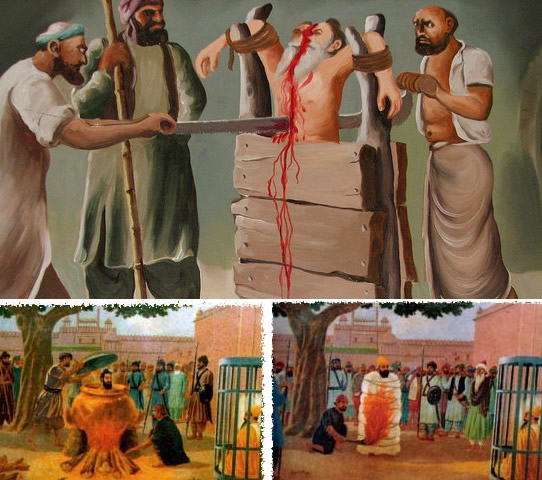
Military Expansion and Administrative Efficiency
Despite his brutal policies, Aurangzeb was an efficient ruler and a masterful military strategist. He expanded the Mughal Empire to its greatest territorial extent, annexing large parts of the Deccan, including Golconda and Bijapur. However, his obsession with expansion overstretched the empire’s resources, leading to administrative inefficiencies and economic decline.
Prolonged military campaigns required significant financial resources, which strained the treasury. Additionally, his rigid administration alienated local governors and zamindars, causing cracks in the centralized governance of the empire. Aurangzeb’s inability to delegate authority and his insistence on personally overseeing military campaigns left the empire vulnerable to internal strife.
Economic Policies, Treaties, and Global Engagement
Aurangzeb inherited a vast and wealthy empire with a strong economic foundation, but his policies placed immense pressure on the treasury. His heavy military expenditures and prolonged wars strained the empire’s finances, leading to higher taxation. He introduced stricter revenue collection methods, which led to peasant revolts and economic instability in several regions. However, his administration maintained a robust trade network, and Mughal India continued to be one of the world’s largest economies during his reign.
Aurangzeb engaged in diplomatic relations with the Ottoman Empire, Persia, and Central Asian states. His treaties with neighboring regions were largely transactional, focused on securing trade routes and military alliances. Unlike earlier Mughal rulers, he showed little interest in fostering cultural or intellectual exchanges with the wider world. His policies were centered on consolidating internal control rather than expanding Mughal influence beyond the Indian subcontinent.
The End of an Era and Legacy
By the time of Aurangzeb’s death in 1707, the Mughal Empire, despite its vast territorial reach, was plagued by insurrections and systemic decline. His long military campaigns in the Deccan had drained the empire’s resources, leaving it weakened and susceptible to regional uprisings. The empire’s centralized authority began to erode, and within a few decades of his death, the Mughal dynasty was reduced to a mere shadow of its former glory. The rise of the Marathas and the Sikh Empire in the aftermath of his death signaled the beginning of the end for Mughal supremacy. The empire that Aurangzeb had fought so hard to expand and consolidate ultimately disintegrated due to internal strife and external pressures.

Aurangzeb remains one of history’s most polarizing figures—a ruler whose efficiency, military prowess, and administrative control were unmatched but whose intolerance and harsh policies left an indelible mark on India’s history. His rule is often seen as a cautionary tale of how religious extremism and unchecked ambition can lead to both glory and downfall. While his military achievements were remarkable, his inability to maintain internal stability and foster unity among his subjects proved detrimental. His reign serves as an example of the perils of over-centralization, religious intolerance, and authoritarian rule, shaping the course of Indian history for centuries to come.
References
- Sarkar, J. (1912). History of Aurangzib. M.C. Sarkar & Sons.
- Chandra, S. (1997). Medieval India: From Sultanat to the Mughals-Part II. Har-Anand Publications.
- Majumdar, R.C. (2007). The Mughal Empire. Bharatiya Vidya Bhavan.
- Tripathi, R.P. (1963). Rise and Fall of the Mughal Empire. Central Book Depot.


